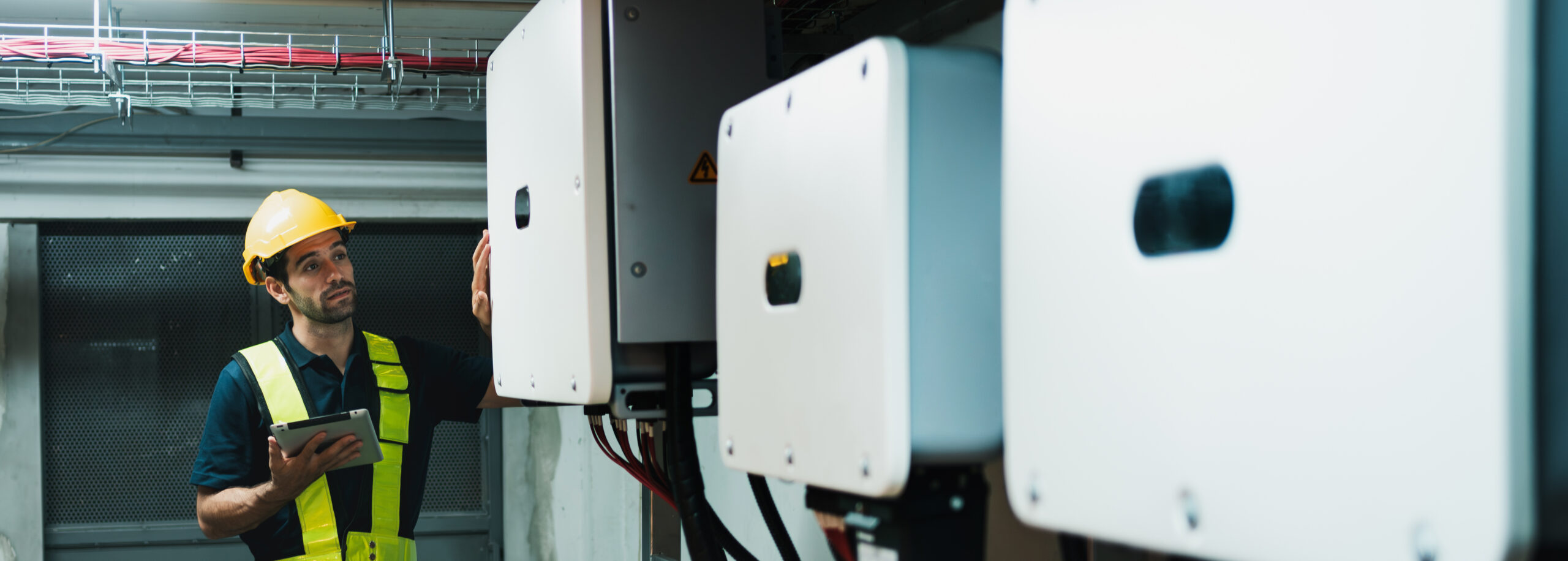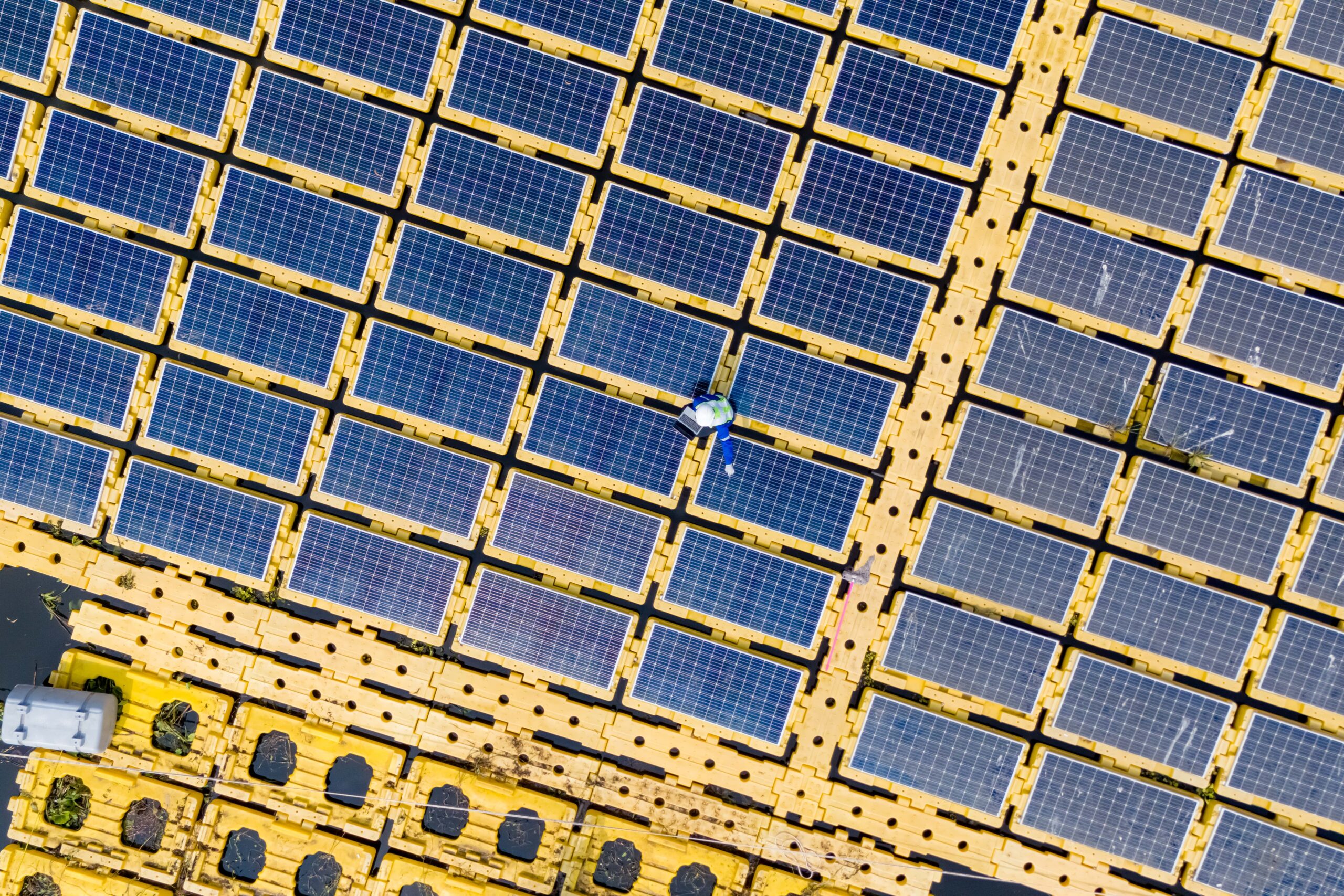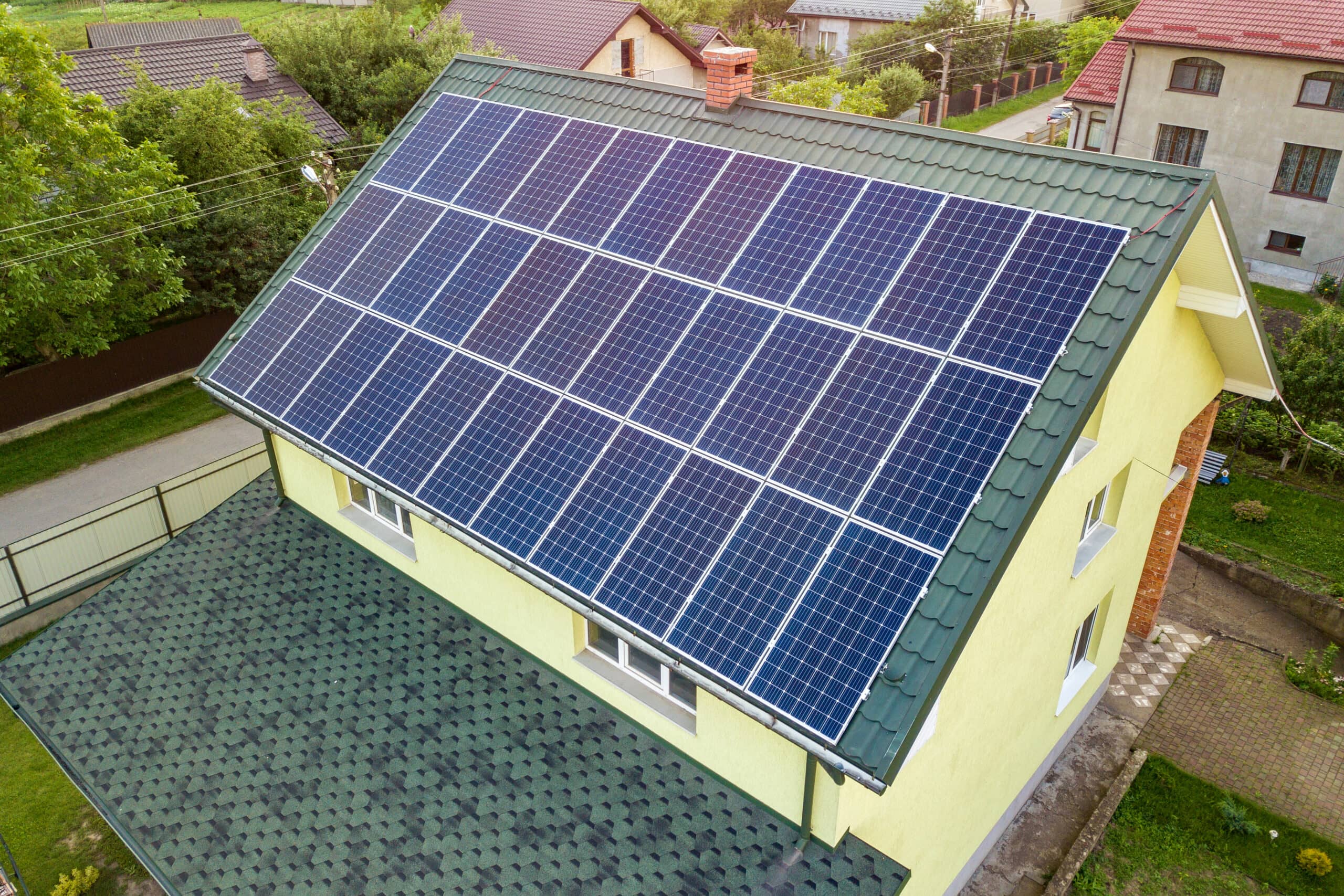Inverters play a vital role in solar power systems by converting the direct current (DC) electricity generated by solar panels into alternating (AC) electricity. This AC electricity can power homes or feed back into the grid. In essence, inverters are a crucial link between solar power generation and our everyday electrical needs. Understanding the different types of inverters, such as grid-tie and hybrid inverters, is critical in optimizing solar energy efficiency and harnessing its full potential.
Hybrid Inverters
Hybrid inverters are a fantastic addition to solar power systems. They have some unique features that set them apart from traditional inverters. Firstly, hybrid inverters can seamlessly switch between grid and battery power, providing uninterrupted electricity during power outages. This feature is handy if you want to have backup power in case of emergencies.
Pros of Hybrid Inverters:
1. Seamless Power Switching: Hybrid inverters can smoothly switch between grid and battery power, providing uninterrupted electricity during outages.
2. Backup Power: Hybrid inverters allow you to store excess solar energy in batteries, ensuring a reliable backup power source.
3. Increased Self-Consumption: Hybrid inverters maximize self-consumption by allowing you to use stored solar energy during peak demand times, reducing reliance on the grid.
4. System Flexibility: Hybrid inverters enable the integration of multiple energy sources, such as solar, batteries, and the grid, giving you more flexibility in designing your system.
5. Energy Independence: Hybrid inverters allow you to generate and store your electricity, reducing dependence on the grid and providing greater energy independence.
6. Environmental Benefits: By utilizing solar energy and storing excess power, hybrid inverters contribute to a cleaner and greener environment by reducing carbon emissions and reliance on fossil fuels.
Cons of Hybrid Inverters:
1. Higher Cost: Hybrid inverters generally come at a higher price point than traditional inverters due to the additional battery storage component.
2. Battery Lifespan and Maintenance: The lifespan and maintenance costs of batteries used in hybrid inverters should be considered, as they will need replacement over time.
3. Complex Installation: Hybrid inverters may require more complex installation than traditional inverters due to the additional components involved, such as batteries and associated wiring.
4. Limited Battery Capacity: The battery capacity of hybrid inverters may be limited, affecting the amount of backup power available during extended outages.
5. Maintenance Requirements: Hybrid inverters with battery storage may require regular maintenance to ensure optimal performance and battery longevity.
Overall, hybrid inverters offer significant benefits in terms of backup power, energy independence, and system flexibility. It’s essential to weigh the advantages and disadvantages based on your specific needs and budget.
Grid Tie Inverters
Grid-tie inverters are an essential component of grid-tied solar power systems. They convert the direct current (DC) electricity generated by solar panels into alternating current (AC) electricity that can be fed into the electrical grid.
Pros of Grid Tie Inverters:
1. Cost-Effective: Grid tie inverters are generally more affordable than hybrid or off-grid inverters since they don’t require battery storage.
2. Efficiency: Grid tie inverters are designed to maximize solar energy conversion efficiency, ensuring optimal power output from the solar panels.
3. Net Metering: Grid tie inverters allow you to take advantage of net metering programs, where excess electricity generated by your solar panels can be fed back into the grid, earning you credits on your utility bill.
4. Simplicity: Grid tie inverters are relatively simple to install and operate, making them popular for residential and commercial solar installations.
5. Reduced Energy Costs: Grid-tied inverters allow you to offset your electricity consumption by generating clean energy, resulting in potential savings on your utility bills.
6. Scalability: Grid tie inverters can be easily expanded by adding more solar panels to your system, allowing you to increase your energy production as needed.
7. Environmental Benefits: By utilizing grid tie inverters and generating solar power, you contribute to reducing greenhouse gas emissions and promoting a cleaner environment.
Cons of Grid Tie Inverters:
1. Dependency on the Grid: Grid tie inverters rely on a stable grid connection to function. If there’s a power outage, the system will only provide electricity to your home if you have a backup power source.
2. Lack of Backup Power: Unlike hybrid inverters, grid-tied inverters do not provide backup power during grid outages because they do not incorporate battery storage.
3. Limited Off-Grid Capability: Grid tie inverters are not designed to operate independently from the grid. This means that if the grid goes down, your solar panels won’t be able to power your home.
4. Grid Dependence: Grid tie inverters rely on a stable grid connection to function. If the grid goes down, your solar power system won’t operate, and you won’t have access to electricity.
5. Lack of Energy Storage: Unlike hybrid or off-grid inverters, grid-tie inverters do not include battery storage, meaning you cannot store excess energy for use during times when the sun is not shining.
6. No Power during Outages: During power outages, grid tie inverters automatically shut down to prevent back feeding electricity into the grid, which could endanger utility workers. This means you will only have power if you have a backup power source.
When deciding on the type of inverter for your solar power system, consider your specific needs, budget, and the availability of grid power in your area.
Hybrid Inverters with Grid-Tie Capability
Hybrid inverters with grid-tie capability combine the functionality of both grid-tie and off-grid inverters. They offer dual functionality, allowing you to connect your solar power system to the grid while also storing excess energy in batteries for use during power outages or when the grid is unavailable.
Pros of Hybrid Inverters with Grid-Tie Capability:
1. Energy Independence: With hybrid inverters, you can still enjoy the benefits of grid connectivity while having the option to use stored energy during power outages or when the grid is down.
2. Increased Self-Consumption: Hybrid inverters enable you to maximize your solar energy self-consumption by storing excess energy in batteries for use during peak demand periods or at night.
3. Potential Cost Savings: By utilizing stored energy during peak demand periods, you can reduce your reliance on grid electricity and potentially lower your utility bills.
4. Backup Power: Hybrid inverters provide a reliable backup power source, ensuring that you have electricity during emergencies or grid disruptions.
Cons of Hybrid Inverters with Grid-Tie Capability:
1. Higher Cost: Hybrid inverters tend to be more expensive than standard grid-tie inverters due to the additional components and functionality they offer.
2. Complex Installation: The installation of hybrid inverters with battery storage can be more complex than that of grid-tie inverters, requiring additional wiring and equipment.
3. Maintenance: Hybrid inverters with battery storage may require regular maintenance and monitoring to ensure optimal performance and battery health.
4. Limited Battery Capacity: The battery capacity of hybrid inverters may be limited, which means you may need to manage your energy usage during extended power outages carefully.
Considering these pros and cons will help you determine if a hybrid inverter with grid-tie capability is the right choice for your solar power setup.
Grid-tie inverters are used in solar power systems connected to the electrical grid, while hybrid inverters offer additional functionality for off-grid and backup power solutions. They are commonly used in residential, commercial, and industrial installations to convert solar power into usable AC power and earn credits or reduce utility bills through net metering.
Hybrid inverters are suitable for off-grid systems, providing power in remote locations or during emergencies, and also offer backup power solutions for uninterrupted electricity supply. They can be used for energy management, peak shaving, microgrids, and remote communities, combining renewable energy sources, battery storage, and grid connectivity for energy independence and stability.
Consider grid-tie inverters if you have access to the electrical grid and want to offset energy consumption, earn credits, or reduce utility bills through net metering. Opt for hybrid inverters if you need backup power solutions, want to go off-grid, or require energy management capabilities, such as peak shaving or microgrid setups.




